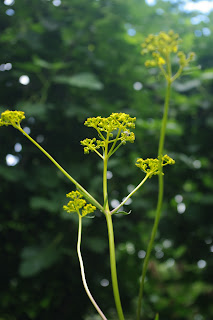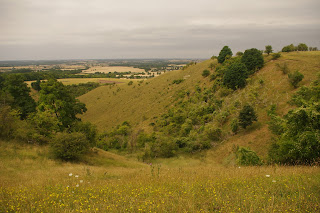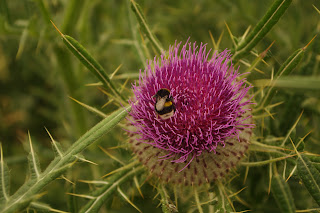I rarely buy plants in the summertime because spring and autumn are the optimum time for planting. But this is a new one on me: Patrinia scabiosifolia. Hails from Japan and is sometimes referred to as Eastern Valerian. I saw it on a market stall and couldn't resist.
Needs a sunny spot but can take a bit of shade the lady told me. The label said well drained soil but some sources say moist. Probably requires that holy grail of soil "moist but well drained".
Anyway, this specimen has a lot of vigorous growth at the base and the bright yellow umbels are pleasingly airy so I'll give it a go.

















































